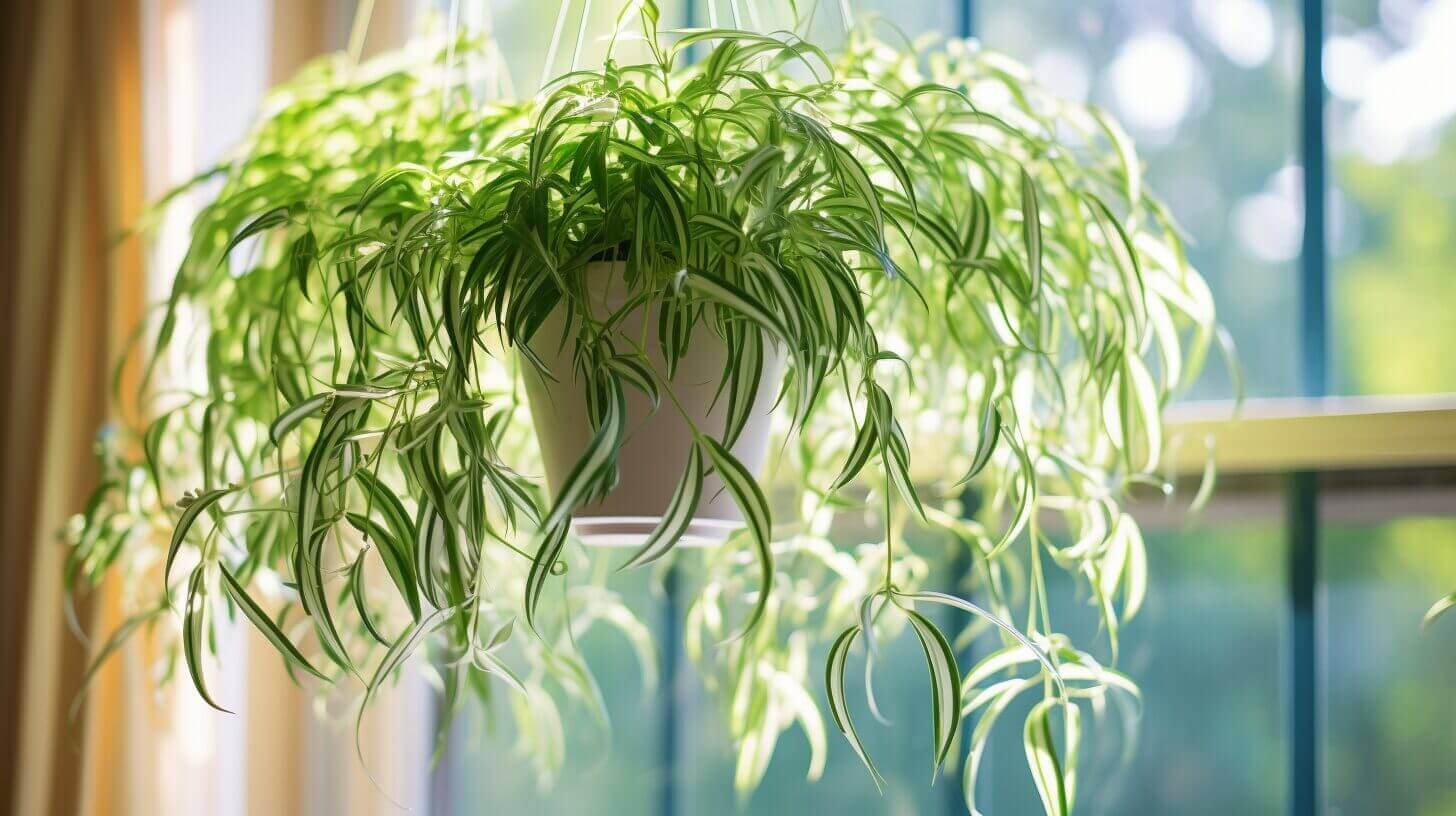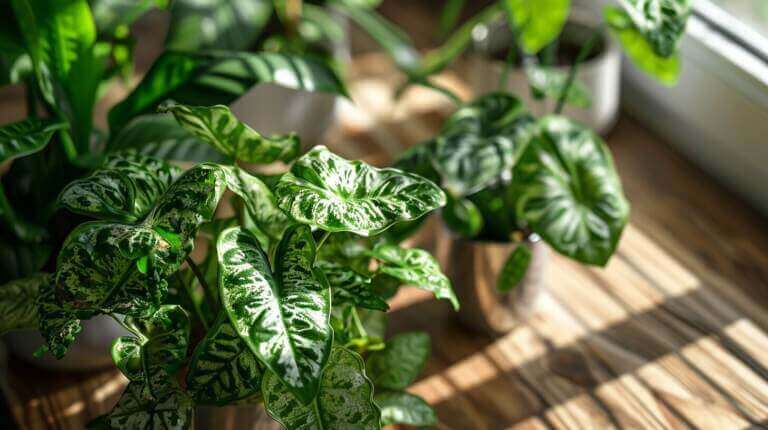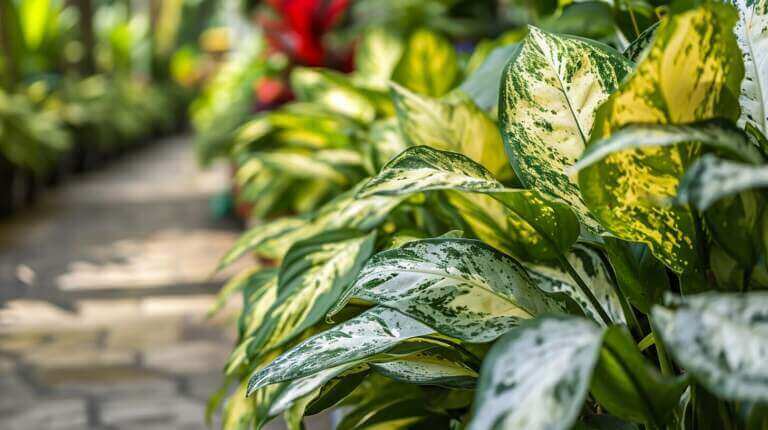Discover the secrets to maintaining a healthy and vibrant spider plant with our comprehensive guide on how and when to trim this popular houseplant.
With detailed step-by-step instructions and essential tips, you’ll learn the best practices for keeping your spider plant thriving.
Whether you’re a seasoned plant enthusiast or a beginner, this informative article will equip you with the knowledge and tools necessary to ensure the longevity and beauty of your spider plant.
Get ready to unleash your green thumb and enjoy the rewards of a flourishing indoor garden.
Key Takeaways
- Spider plants have three main stages of growth: development of small plantlets, growth of larger spiderettes with more roots, and maturation into full-grown plants.
- Adequate water and light are important during the first stage to promote healthy growth.
- Overgrown foliage and brown or yellowing leaves indicate the need for trimming to maintain a compact shape and promote new growth.
- Trimming can also help control pest infestation and prevent diseases like root rot and leaf spot.
Understanding the Growth Patterns of Spider Plants
Spider plants exhibit distinct growth patterns that can be categorized into three main stages. Understanding spider plant propagation is essential for successfully caring for these popular indoor plants.
The first stage of growth begins with the development of small plantlets, or spiderettes, that sprout from long stems. These spiderettes will eventually grow their own roots, allowing them to become independent plants. During this stage, it is important to provide adequate water and light to promote healthy growth.
The second stage involves the spiderettes growing larger and developing more roots. It is crucial to avoid overwatering during this stage, as excessive moisture can lead to root rot. It is also important to provide the plant with a well-draining potting mix to prevent waterlogged soil.
In the final stage, the spiderettes mature into full-grown plants. At this point, they can be transferred to their own pots or left to grow alongside the mother plant. Common mistakes to avoid when trimming spider plants include cutting off healthy leaves or over-pruning, which can hinder their growth and overall health.
Identifying When To Prune A Spider Plant
To properly care for your spider plant, it is important to identify when it needs trimming and to understand the signs that indicate pruning is necessary. Here are four key indicators that your spider plant requires trimming:
- Overgrown foliage: If your spider plant’s leaves are becoming excessively long and unruly, it is a clear sign that it needs a trim. Trimming will help maintain its compact shape and prevent it from looking messy.
- Brown or yellowing leaves: Spider plants are sensitive to overwatering, and one of the signs of this is the development of brown or yellowing leaves. Trimming off these damaged leaves will not only improve the plant’s appearance but also promote new growth.
- Pest infestation: Spider plants are susceptible to common pests such as spider mites and mealybugs. If you notice signs of infestation, such as webbing or white cotton-like masses on the leaves, trimming affected areas can help control the spread of the pests.
- Disease or rot: Spider plants can also suffer from diseases like root rot or leaf spot. If you notice any signs of disease, such as discolored or mushy leaves, it is essential to trim away the affected parts to prevent further damage.
Identifying these signs will help you determine when your spider plant needs trimming, ensuring its health and vitality.
Now, let’s move on to the next section, where we will discuss the essential tools for trimming your spider plant.
Essential Tools for Trimming Your Spider Plant
When trimming your spider plant, it is important to have the necessary tools on hand to ensure a clean and precise cut. The right tools will make the pruning process easier and more effective, allowing you to maintain the health and appearance of your plant.
One essential tool for trimming your spider plant is a pair of sharp pruning shears. These shears should have a clean, sharp blade that can easily cut through the plant’s leaves and stems without causing damage. Additionally, having a pair of gloves is important to protect your hands from any potential scratches or irritations.
When using pruning shears, it is crucial to avoid common mistakes such as cutting too close to the base of the plant or leaving behind jagged edges. By using the proper tools and applying correct pruning techniques, you can ensure a successful trimming process for your spider plant.
Step-by-Step Guide to Trimming Your Spider Plant
Once you have gathered the necessary tools and prepared your workspace, begin the step-by-step process of trimming your spider plant to ensure its optimal growth and appearance. Follow these four simple steps to prune your spider plant effectively:
- Inspect the plant: Start by carefully examining the spider plant and identifying any damaged, discolored, or dead leaves. These should be the primary focus of your pruning efforts.
- Use clean, sharp tools: It is crucial to use clean and sharp tools, such as pruning shears or scissors, to prevent any unnecessary damage to the plant. Sterilize the tools with rubbing alcohol before and after each use.
- Trim selectively: Trim the damaged or dead leaves by making clean cuts at the base of the stem, ensuring that you do not remove healthy foliage. This selective pruning promotes new growth and enhances the overall appearance of the plant.
- Maintain a balanced shape: As you trim, aim to maintain a balanced shape for your spider plant. Avoid cutting too much at once, as it can weaken the plant. Regular, small trims will help keep the plant healthy and prevent it from becoming overgrown.
By following these steps, you can enjoy the benefits of pruning spider plants, such as improved air circulation, increased light exposure, and a more visually appealing plant.
However, it is essential to be aware of common mistakes to avoid when trimming spider plants.
Best Practices for Maintaining a Healthy and Thriving Spider Plant
Regular watering is one of the best practices for maintaining a healthy and thriving spider plant. Spider plants require consistent moisture, but it’s important not to overwater them, as this can lead to root rot. The key is to water the plant thoroughly when the top inch of soil feels dry to the touch. It’s also beneficial to use water that is at room temperature, as cold water can shock the plant. Additionally, spider plants benefit from occasional misting, especially during dry winter months to increase humidity levels.
In order to further ensure the health of your spider plant, it is important to be aware of common pests and diseases that can affect them. Spider mites, aphids, and mealybugs are some of the common pests that can infest spider plants. To combat these pests, you can regularly inspect the plant for any signs of infestation and use natural pest control methods such as spraying the leaves with a mixture of water and mild soap. As for diseases, root rot and leaf spot are common issues that can arise. To prevent root rot, make sure the plant is not sitting in water and that it is planted in well-draining soil. Leaf spot can be prevented by avoiding overhead watering and ensuring good air circulation around the plant.
The following table summarizes the effective watering techniques, common pests and diseases that can affect spider plants:
| Best Watering Practices | Common Pests and Diseases |
|---|---|
| Water thoroughly when the top inch of soil is dry | Spider mites |
| Use room temperature water | Aphids |
| Mist occasionally to increase humidity | Mealybugs |
| Avoid overwatering to prevent root rot | Leaf spot |
| Plant in well-draining soil | |
| Avoid overhead watering | |
| Ensure good air circulation around the plant |
Frequently Asked Questions
Can I Use Regular Scissors or Do I Need Special Tools to Trim My Spider Plant?
When it comes to trimming your spider plant, you have the option to use regular scissors or special tools. While special tools, such as pruning shears, can provide a cleaner cut, regular scissors can also be used effectively. The key is to ensure that the blades are clean and sharp to avoid damaging the plant.
Proper care for trimmed spider plant cuttings involves placing them in water until roots develop, and then transferring them to soil for growth.
Is It Necessary to Trim the Roots of My Spider Plant During the Trimming Process?
Root trimming is not necessary during the process of trimming a spider plant. While it is common to trim the leaves and stems of the plant to maintain its shape and promote healthy growth, root trimming is typically reserved for specific scenarios such as repotting or when the roots are overcrowded.
Trimming the roots can help prevent root-bound situations and encourage new growth, but it is not a mandatory step in the general trimming process.
Can I Propagate the Cuttings From Trimming My Spider Plant?
Propagation success of spider plant cuttings can be achieved through various methods. One common approach is to propagate the cuttings in water until roots develop, and then transfer them to soil.
Another method involves planting the cuttings directly into a well-draining potting mix.
Both methods require providing adequate humidity and indirect light to support the growth of new roots.
Can Trimming Your Spider Plant Help Make It Bushier?
Trimming your spider plant can indeed help promote fuller growth. By removing the leggy or lengthy stems, you allow the plant to redirect its energy towards lateral growth. This stimulates the production of side shoots and offsets, resulting in a bushier appearance. Regular pruning also prevents the plant from becoming straggly, giving it a more compact and attractive shape. Embrace the benefits of spider plant fuller growth by implementing this simple trimming technique.
How Frequently Should I Trim My Spider Plant to Maintain Its Health and Appearance?
To maintain the health and appearance of a spider plant, regular trimming is recommended. Trimming helps to control the plant’s size, promote new growth, and maintain its overall shape. The frequency of trimming depends on the specific needs of the plant and the desired appearance.
It is generally advisable to trim spider plants every few months or as needed. Trimming can also provide an opportunity to propagate the plant by using the cuttings to grow new spider plants, which is best done during the plant’s active growing season.
Are There Any Specific Precautions I Should Take While Trimming My Spider Plant to Avoid Damaging It?
When it comes to trimming your spider plant, it is important to take certain precautions to avoid causing any damage. These precautions include using sharp and clean tools, such as pruning shears, and making clean cuts at a 45-degree angle.
Additionally, it is crucial to care for your spider plant after trimming by providing it with proper watering and light conditions. This will help promote new growth and prevent any diseases or pests from infesting the plant.







